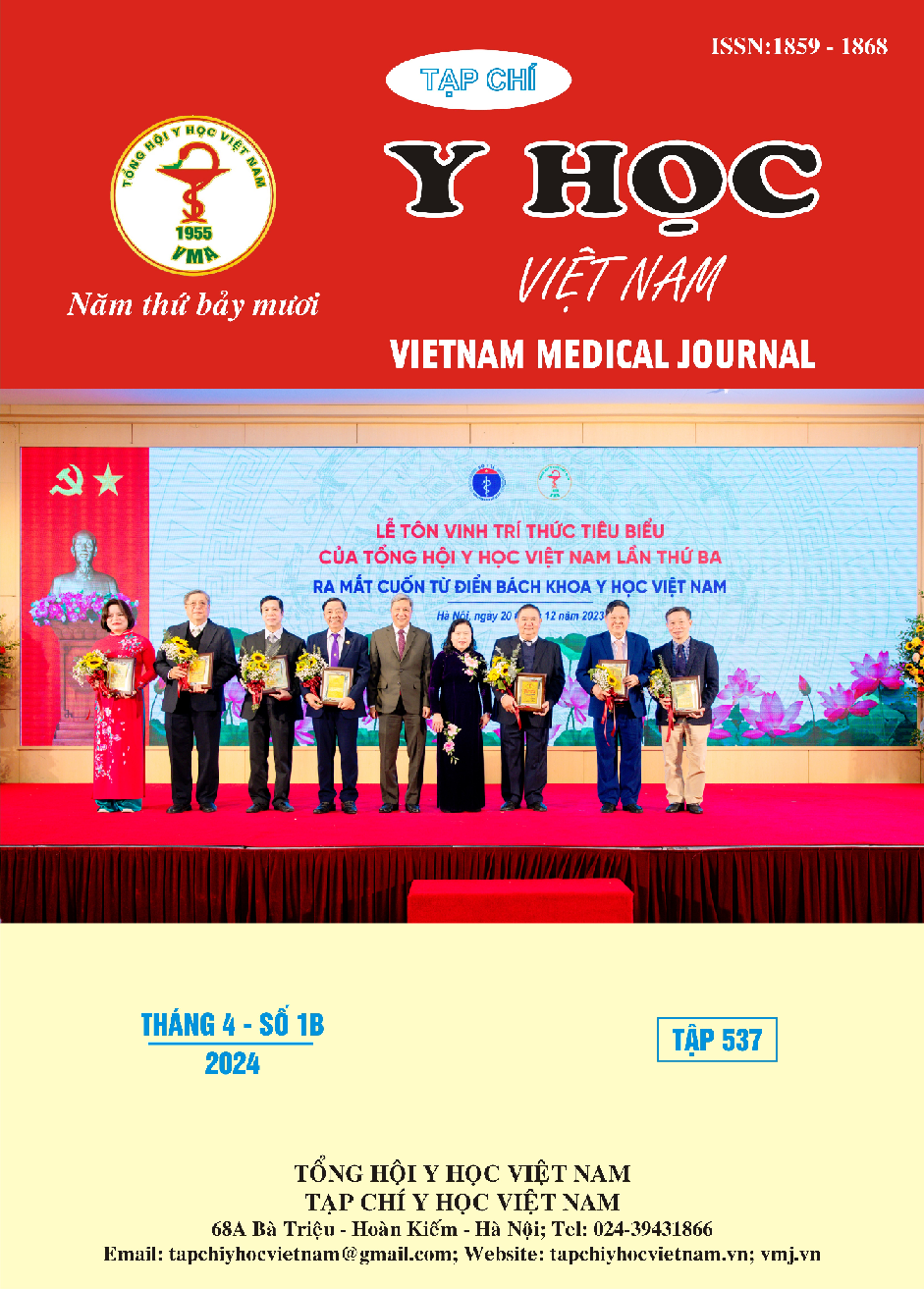THE ROLE OF JUGULAR ULTRASOUND IN THE RIGHT 30-DAY READMISSION PROGNOSIS OF HEART FAILURE PATIENTS
Main Article Content
Abstract
Introduction: Heart failure is the leading causes of increased disease burden as well as the risk of rehospitalization. Accurate assessment of the pre-discharge volume status of patients with heart failure may reduce the event of readmission. We demonstrate a non-invasive and convenient method, ultrasound assesses the rate of change in the cross-sectional area of the right internal jugular vein when performing the Valsalva test, which can predict right atrial pressure, reflecting residual congestion. Thereby, determining the prognostic role of right intravenous ultrasound with readmission for acute decompensated heart failure within 30 days of heart failure patients. Methods and results: A cohort study at a cardiovascular center of heart failure patients who received inpatient treatment from October 2020 to March 2021. Atrial pressure must be determined by the rate of change in the cross-sectional area of the right internal jugular vein at the tension and rest stage of the Valsalva test. A positive result is determined when the rate is < 66% (reflecting right atrial pressure ≥ 12 mmHg). The goal of monitoring is readmission and/or death in 30 days. In 333 patients enrolled for our study, 153 cases (45.9%) were recorded positive. At follow-up 30 days after discharge, 38 cases (11.4%) were readmitted to the hospital due to ADHF. The ultrasound positivity is an independent predictor of readmission to acute decompensated heart failure at any time during the 30 days after discharge of a heart failure patient (HR = 2.097). Conclusions: This ultrasound technique determines the rate of change in the cross-sectional area of the right internal jugular vein when the Valsalva test is a non-invasive and easy-to-perform method for assessing right atrial pressure, reflecting congestion and the 30-day readmission prognosis of patients with heart failure. This tool could help guide inpatient ADHF treatment and may lead to reduced readmissions.
Article Details
References
2. Butler J, Braunwald E, Gheorghiade M. (2014). "Recognizing Worsening Chronic Heart Failure as an Entity and an End Point in Clinical Trials". JAMA, 312(8), pp. 789-790.
3. Mele D., Pestelli G., Molin D. D., et al. (2020). "Right Atrial Pressure Is Associated with Outcomes in Patients with Heart Failure and Indeterminate Left Ventricular Filling Pressure". J Am Soc Echocardiogr, 33(11), pp. 1345-1356.
4. Reyes E. B., Ha J. W., Firdaus I., et al. (2016). "Heart failure across Asia: Same healthcare burden but differences in organization of care". Int J Cardiol, 223, pp. 163-167.
5. Simon M. A., Schnatz R. G., Romeo J. D., et al. (2018). "Bedside Ultrasound Assessment of Jugular Venous Compliance as a Potential Point-of-Care Method to Predict Acute Decompensated Heart Failure 30-Day Readmission". J Am Heart Assoc, 7(15), pp. e008184.
6. Srivastav Shival, Jamil Radia T, Zeltser Roman. (2019). Valsalva maneuver. In: StatPearls [Internet]. Treasure Island (FL): StatPearls Publishing; 2021 Jan-. Available from: https://www.ncbi.nlm.nih.gov/books/NBK537248/.
7. Virani Salim S, Alonso Alvaro, Aparicio Hugo J, et al. (2021). "Heart disease and stroke statistics—2021 update: a report from the American Heart Association". Circulation, 143(8), pp. e254-e743.


